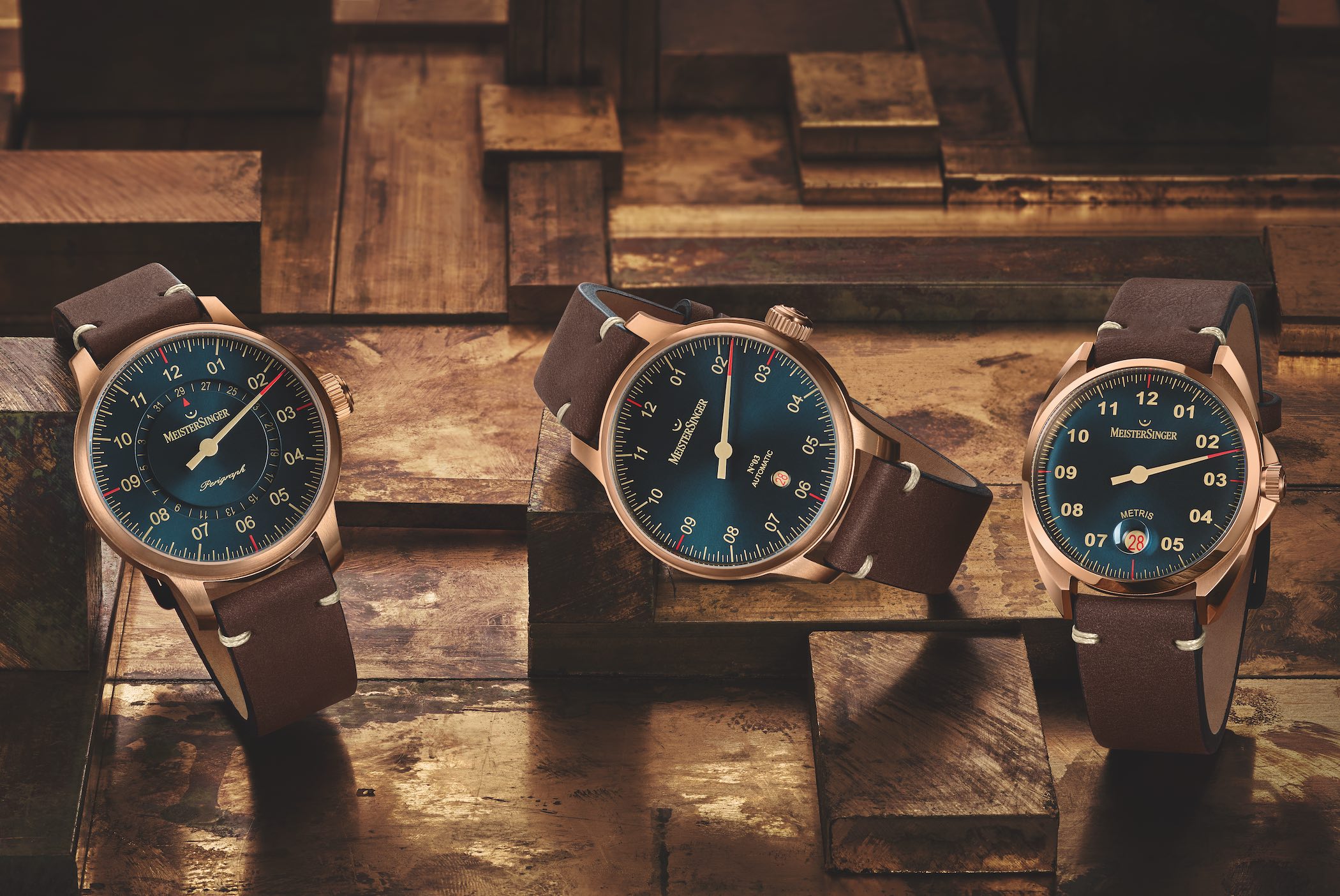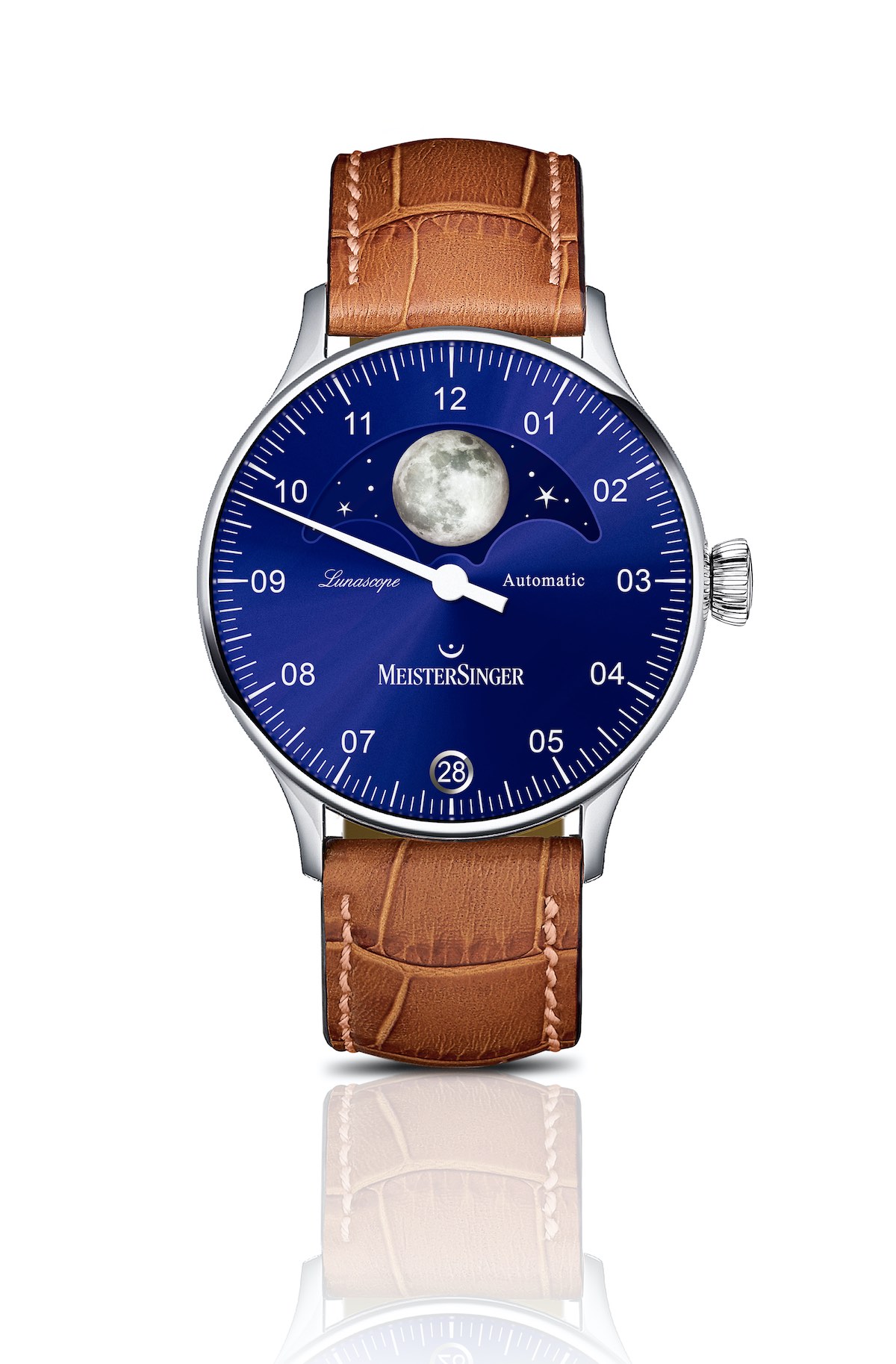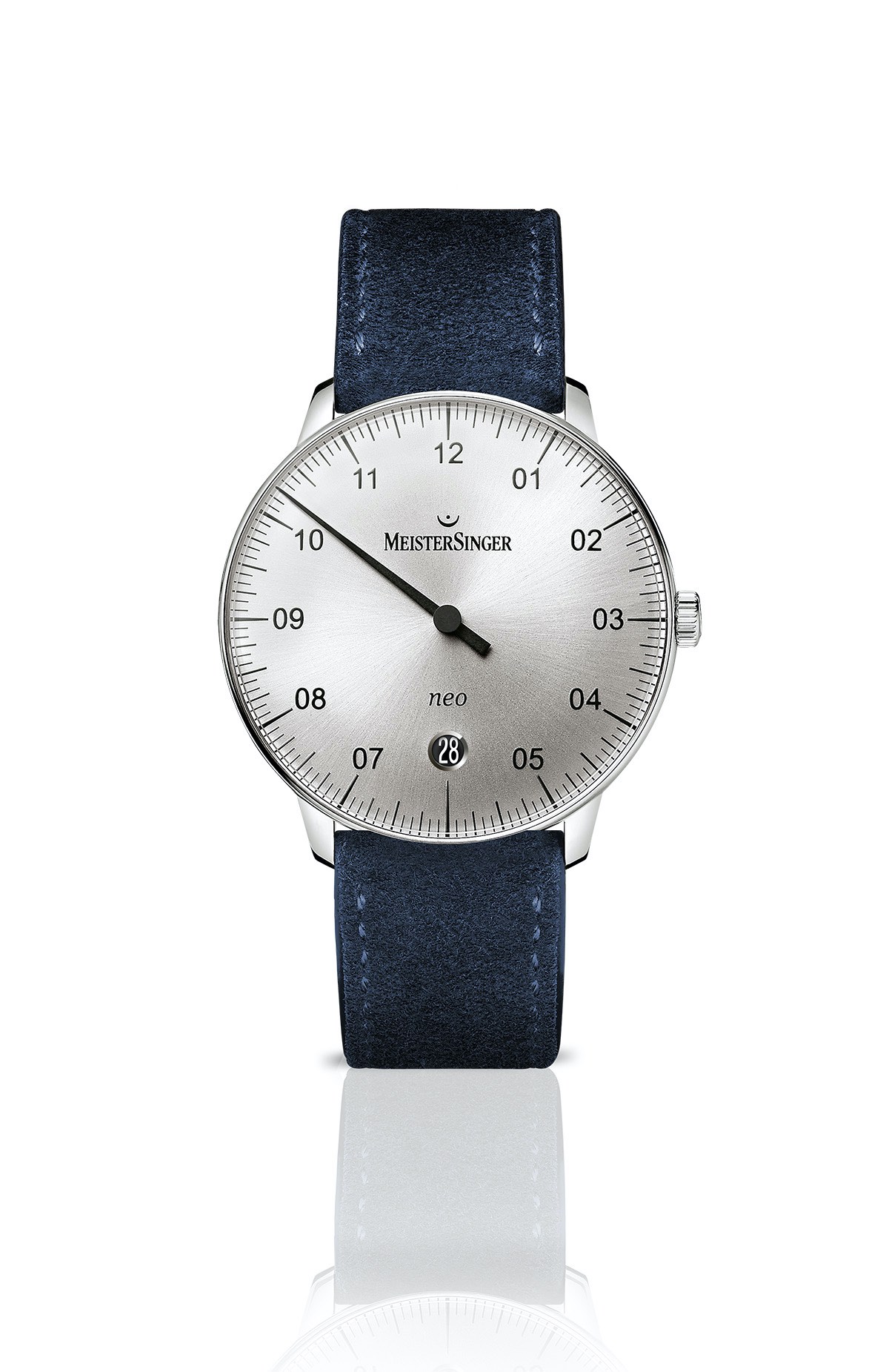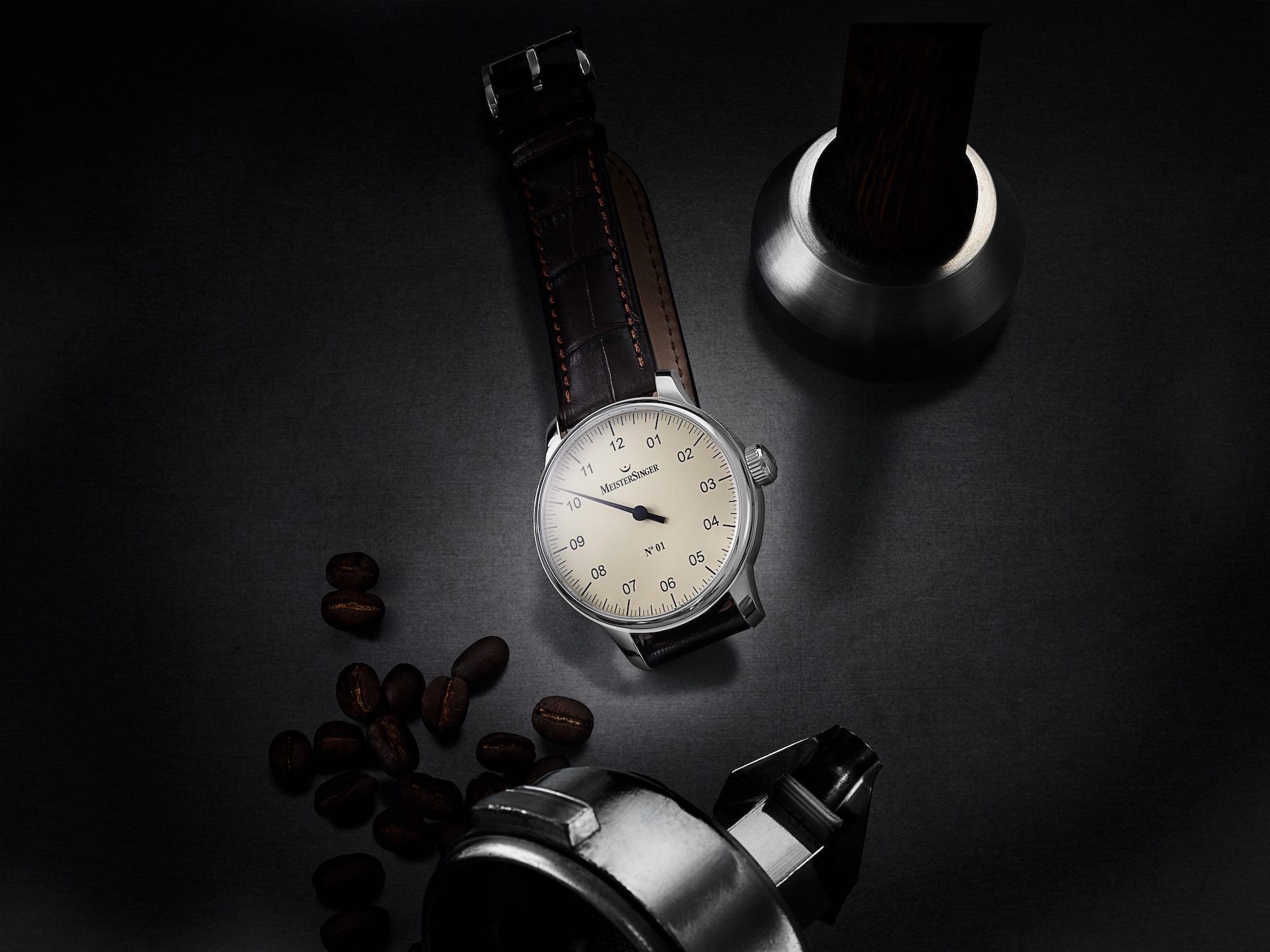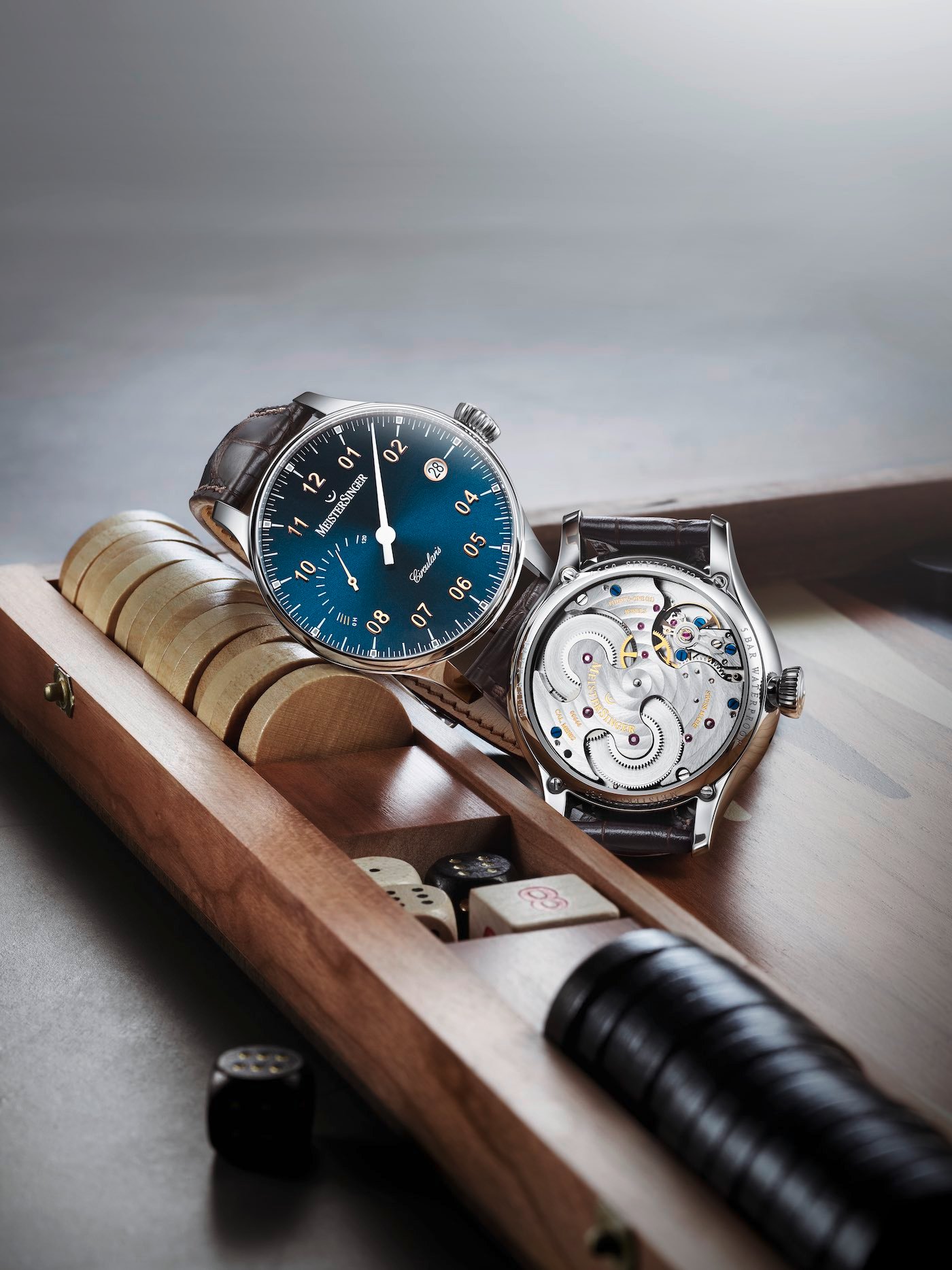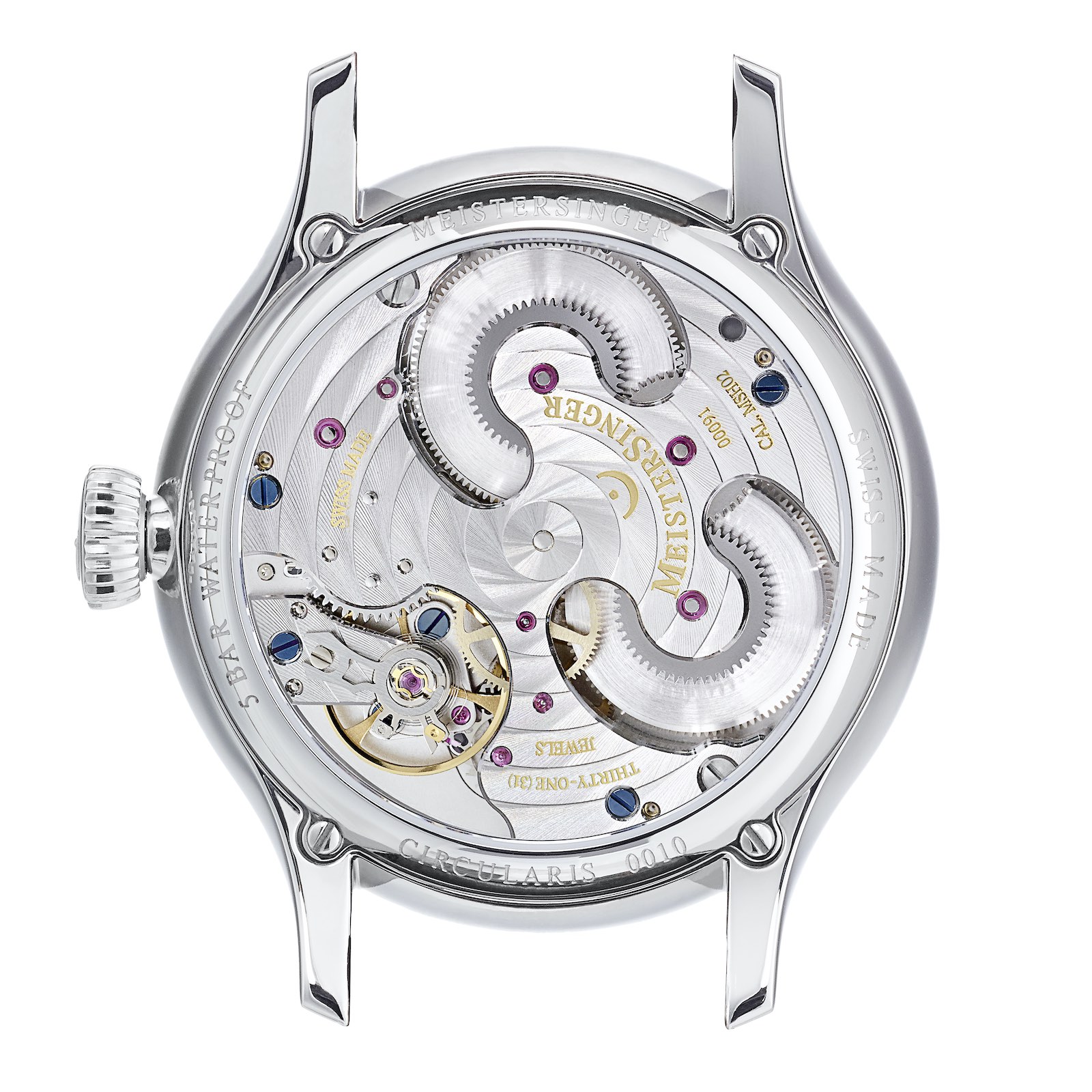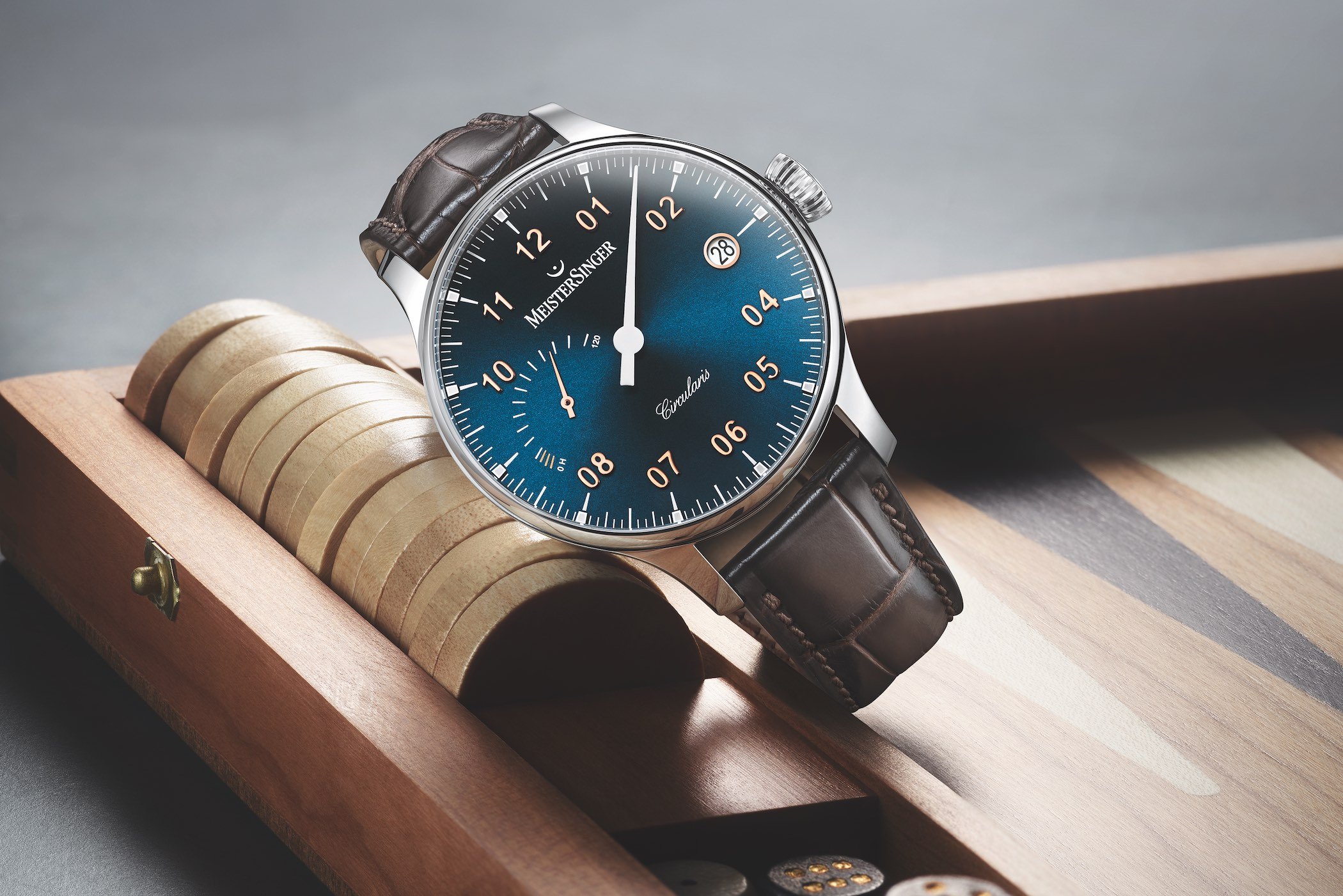The Intriguing Philosophy of Time that Carved Out MeisterSinger’s Niche
Because one hand can teach you something that two hands can’t...

John van Steen, the managing partner of MeisterSinger, proudly calls their creations “the most valuable watches in the world”. But the philosophy behind this somewhat debatable statement is anything but arrogant. Meet the man who became Mr MeisterSinger by sheer humble thinking. And it’s all about one single hand to display the time.

It’s a cold November afternoon, and it’s raining. I’m late for our meeting. Normally, that is a bit of a problem in Germany, a country well-known for its accuracy and punctuality. Well-prepared for a stiff face and a slightly cold shoulder, I enter the MeisterSinger board room in Münster to meet John van Steen. At the beginning of 2019, Van Steen got promoted to managing partner of the company, giving him de facto the position of CEO. But when he enters the room, he’s relaxed and all smiles. “Sorry, I’m late,” I say. “No worries,” he says. “It’s good to have you here. Come, take a seat.”

I’ve known John for about a decade, and to me, he is Mr MeisterSinger as he’s always been the representative of the brand. First as the Dutch agent for the brand, and later as sales director. He started representing MeisterSinger shortly after he met company founder Manfred Brassler with his new brand at the Baselworld fair in 2003. “His one-hand watches immediately appealed to me,” he says. “Back then, I could see they had a lot of potential, but you can never be sure that the market would actually pick up on it. And I really liked the watches. That helped me a lot, as I’m not the kind of person who can sell ice to Eskimos. I really have to understand the brand before I can sell it.”
Distinct designs
If you look at the brand MeisterSinger, or its watches, you might think the brand is much older than it is. When I mention this to Van Steen, he laughs. “It’s quite funny you mention that,” he says. “Sometimes people come up to me, saying: ‘I love MeisterSinger. My grandfather used to wear it when I was a little child’. Obviously, that’s impossible because the brand has only existed since 2001.”
MeisterSinger has carved its little niche in the past two decades and has done so in quite a charming way. The watches look different than most classic timepieces because the watches only have one hand and the designs are very well thought out. Clean, but never boring. The designs are not necessarily Bauhaus, but they are distinctly German and instrumental.
The meaning of time
But MeisterSinger also feels different than other brands, and that is somewhat more difficult to interpret. It has to do with character, with values. Talking to Van Steen helps to understand where the MeisterSinger character comes from. It’s not a marketing script; it is a deeper understanding of what time means to them.
“I’m not going to say we are a black sheep, but we are different,” Van Steen tells me. “The idea of the one-hand watches comes from Manfred obviously, and older clocks inspired it. And if you translate that given to modern times, you get a different way of experiencing time.”
“I like to go to trade fairs and consumer events to meet the buyers of our watches. They always ask why our watches only have one hand. And I turn the question around: ‘Are those minutes and seconds really that important in life? Have you ever had an appointment at seventeen minutes past ten? And if you don’t care too much about those two minutes with something as important as an appointment, then why would you want to be confronted with minutes and seconds all the time?’ We’re always putting the pressure of time on ourselves too much. Obviously, I’m not saying that time is unimportant, by the way. Time is very important.”
In constantly pursuing the understanding of its products, MeisterSinger has developed a unique philosophy of time, called “Rituals of Time”. The basic idea is that that these watches don’t impose their technical precision on their owners, but accompany them discreetly throughout the day. They tell the wearer when it’s about time for the rituals and events that give their day structure, such as the time for morning coffee, or the time to call home. MeisterSinger watches help you to perceive time in a different, more relaxed way.
“That is an interesting philosophy,” I answered Van Steen. “But was it this thought behind the single-hand watches or did this story grow as the company grew?” Van Steen replied: “It was partly the initial idea behind the watches. The single hand was partly a design solution and partly a philosophy. But as I stayed longer in the company, those ideals and my own personality became more and more intertwined. While I was working here, the philosophy developed with my own ideas: this is actually my attitude towards life.”
And so the philosophy expanded. “A watch that tells time to the nearest five minutes makes the wearer more tolerant in terms of being slightly early or late, and definitely calmer in the knowledge that the really important appointments are not measured in seconds.”
International expansion
All of this deeper take on time does need some explanation now and then. Van Steen is just back from the Middle East, where the German brand’s attended the Dubai Watch Week (for which they made the very interesting Reverse Circularis watch) for the first time. It signifies the growth MeisterSinger has had in the past decade. Official sales numbers are not communicated, but Van Steen says the company sells “around 10,000 pieces” annually, up from about 6,000 pieces ten years ago. And with ambitions to keep this rate of growth steady in the next decade. MeisterSinger’s core market is the segment between EUR 1,000 and EUR 3,000 and plans to stay there. Its main markets are Northern Europe, which seems logical when it comes to the design and the origin of the brand. The fact that the brand name is easily pronounceable in most languages was “by complete coincidence”.
Van Steen adds that cultural differences also play a role when going abroad. “I heard one very interesting story recently, a story that really showed to me how important it is to go to watch fairs and talk to clients. It was in Japan, where I asked a retailer why our sales were low in his country. Japan is a big market for practically every German brand, except for us. ‘The problem is your attitude towards time,’ the retailer said. ‘In Japan, every second count, you have to be productive in every second and minute otherwise you’ll embarrass your family. Your watches tell us that not every minute and every second count. That it doesn’t really matter much whether it’s 13:29 or 13:31.’ So knowing that we can focus on markets which appreciate and understand our philosophy. Luckily for us, many markets are open for this other way of looking at time.”
Technical prowess
It also raises a different question. Is this whole philosophy-thing not a cover-up for making slightly inaccurate watches? Van Steen resolutely dismisses this question. “No, that is definitely not the case. No-one needs to question the technical accuracy of our products. We’re using the same Sellita and ETA movements as everybody else does. Also, the retailers we work with are a guarantee for a certain quality. That’s not something we need to argue about. We are a watch manufacturer, and our primary task is to produce accurate watches. That we approach time differently, is something else altogether.”
MeisterSinger has one proprietary movement, which was introduced in 2014. It’s called the Circularis or calibre MSH01 for the hand-wound and MSA01 for the automatic version. The aesthetics are very impressive, as are the specifications. It was developed and designed by Manfred Brassler with the help of master watchmaker Johannes Jahnke and his team. They did so with the specific purpose of displaying time with a very long single hand, and to meet that precision, a dial train with spring wheel was integrated into the movement to minimize the backlash of the hand. It has a twin-barrel power reserve of 120 hours, and it comes as either a hand-wound or automatic. The movement is produced in Switzerland and is found in the top range of the collection.
Asked whether MeisterSinger would like to add more own movements or calibres to its collection, Van Steen briefly hesitated – for the only moment in the entire conversation. “We don’t really have the ambition to become a full manufacture yet,” he said. “But we do have some very interesting things coming up. New technical developments. But it really should fit the idea that we’re not going to measure time more and more accurately and, most importantly, it has to fit in our price range.”
New and fresh creativity seems to keep on flowing out of Münster. With these minimalistic designs, MeisterSinger could easily have been a one-trick pony. But after nearly two decades of making great, new and fresh watches, it is safe to say it’s much more than just a simple design gimmick. “We really don’t have any problems coming up with new ideas,” says Van Steen. “The inspiration keeps on coming. And every year, we make new watches that make me look twice. We recently added a new, fresh face to our design team and he comes up with new solutions and ideas. I’m quite confident new and interesting watches will keep on coming.”
A deeper understanding
It was a cold November afternoon, and it was raining. John was driving home from school. Normally, that wouldn’t be a problem, but this time was different. John was not coming home at all. It was in 1983, and mobile phones did not exist yet. What did exist were fast motorbikes, and John had one. Somewhere halfway home, something caught his attention, and he was no longer looking at what was happening in front of him. “I don’t know much about that day anymore,” he tells me. “I think that I must have looked over my shoulder briefly, turning my steering wheel as I went… the roadside was slippery and muddy… I lost control of the motor, and I flew against a tree. I heard they had to drag me out of a ditch, and my ankle was literally lying next to my ear… I only remember being in the hospital, hearing that I was lucky even to be alive.”
“I was 17 years old back then, and at that moment in life, you don’t really think about the value of time. But as time passed, I would remember that near-death experience sometimes and I learned to appreciate the fact that there still was time for me around here. And when I got children of my own, that feeling grew even more.”
“Experiences like that change you. For me, it changed the way I perceived time. That we shouldn’t take everything too seriously. We’re always chasing after something. We always want more, without appreciating the things we actually have. But there are different priorities in life.”
“I really mean it when I say this, and some people might think it is a bit arrogant, but I think we sell the most valuable watches in the world. On our watches, time seems to be passing by just a bit slower. And we all know that the most valuable thing we have here is time.”

